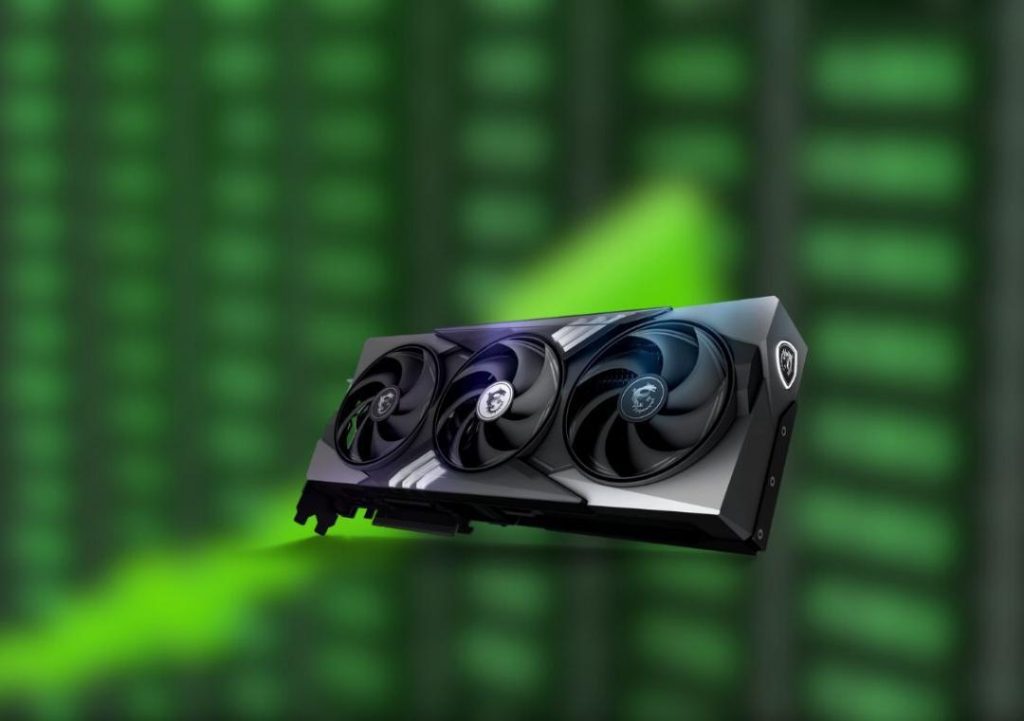
Nvidia RTX 50 series GPU still struggling with pricing and stock
It’s been a month since Nvidia released its highly anticipated RTX 50 series GPUs, and gamers are still struggling to find them at the Manufacturer’s Suggested Retail Price (MSRP). The low-stock paper launch of the RTX 5090 and RTX 5080 left many frustrated, pushing buyers towards the more affordable RTX 5070 Ti. However, disappointment followed as non-MSRP models surfaced, with some priced nearly as high as Nvidia’s official pricing for the RTX 5080.
The RTX 50 series was expected to be a game-changer in the world of gaming, offering improved performance, power efficiency, and features like ray tracing and AI-enhanced graphics. However, the initial launch was marred by stock issues, with many retailers failing to receive their shipments on time. This led to a scramble for availability, with some buyers resorting to online marketplaces and secondary sellers to get their hands on the new GPUs.
But even for those who managed to secure an RTX 50 series GPU, the experience was not without its headaches. Non-MSRP models began to surface, with some sellers charging exorbitant prices for the new GPUs. For example, the RTX 5070 Ti, which was initially priced at around $500, was suddenly being sold for upwards of $800. This not only made it difficult for gamers to get their hands on the GPUs but also eroded trust in the market.
The situation was further complicated by the fact that Nvidia’s official pricing for the RTX 50 series was not clearly communicated to retailers. This led to a lack of consistency in pricing across different regions and retailers, making it difficult for buyers to know what to expect. In some cases, retailers were charging prices that were significantly higher than Nvidia’s official MSRP, adding to the frustration and confusion.
But the problems with the RTX 50 series launch don’t stop there. There have also been reports of quality control issues with some of the GPUs, with some buyers experiencing problems with their cards out of the box. This has led to a surge in returns and exchanges, further straining the already tight supply chain.
So, what’s going on? Why is Nvidia struggling to get its RTX 50 series GPUs to market, and what can be done to address the issues? The answer lies in a combination of factors, including the ongoing global chip shortage, supply chain disruptions, and the sheer demand for the new GPUs.
The global chip shortage has been a major challenge for the tech industry in recent months, with many companies struggling to secure the components they need to manufacture their products. Nvidia is no exception, and the shortage has likely contributed to the delays and stock issues seen with the RTX 50 series launch.
In addition to the chip shortage, supply chain disruptions have also played a role in the RTX 50 series launch. Covid-19 restrictions and lockdowns have made it difficult for Nvidia to get its manufacturing facilities up and running at full capacity, leading to delays and shortages.
Finally, the demand for the RTX 50 series GPUs has been incredibly high, with many gamers eager to get their hands on the new cards. This demand has put pressure on the supply chain, making it difficult for Nvidia to meet the demand for the GPUs.
So, what can be done to address the issues with the RTX 50 series launch? Firstly, Nvidia needs to work on improving its supply chain and manufacturing processes to ensure that it can meet demand. This may involve investing in new manufacturing facilities or partnering with other companies to increase production capacity.
Secondly, the company needs to do a better job of communicating its pricing and availability to retailers and customers. This could involve providing clearer guidance on pricing and availability, as well as offering more transparency around the supply chain and manufacturing process.
Finally, Nvidia needs to address the quality control issues that have arisen with some of the RTX 50 series GPUs. This could involve implementing new quality control measures, such as additional testing and inspection, to ensure that all GPUs meet the company’s high standards.
In conclusion, the RTX 50 series GPU launch has been a challenging experience for both Nvidia and its customers. The company’s struggle to get its new GPUs to market, combined with the non-MSRP prices and quality control issues, has left many gamers feeling frustrated and disappointed. However, with some adjustments to its supply chain, manufacturing processes, and communication strategies, Nvidia can get its RTX 50 series GPUs back on track and deliver the performance and value that gamers are looking for.
Source: https://sports.info/esports/nvidia-rtx-50-series-gpu-still-struggling-with-pricing-and-stock-8778669






